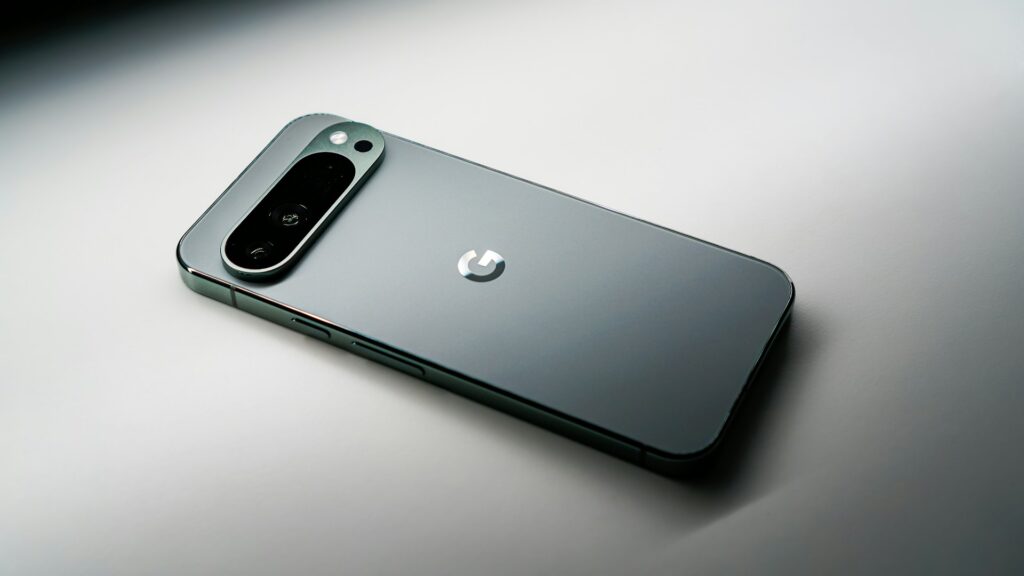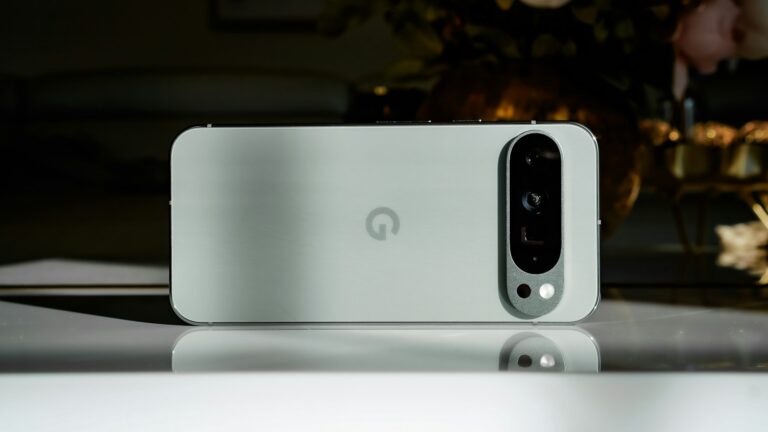Google’s upcoming Pixel 9a might be a game-changer in smartphone design, shedding some of the most iconic features from previous Pixel models, like the signature camera bar. Early leaks suggest that the Pixel 9a could introduce a significant departure from Google’s established design language, offering a flat, minimalist back panel with inset cameras. This could make it the most radical Pixel design since the Pixel 6’s introduction of the camera bar. Beyond its unique form factor, the Pixel 9a could also debut with Android 15, setting a new standard for Google’s budget-friendly lineup.
A New Design Language: Flat as a Pancake
One of the most striking features of the Google Pixel 9a, according to leaks from OnLeaks and shared by Android Headlines, is its completely flat back panel. Previous Pixel devices have featured a prominent camera bar or bump, which has been a defining visual characteristic since the Pixel 6. This bar not only housed the cameras but also gave the Pixel its distinct look, setting it apart from other smartphones on the market.
However, the Pixel 9a may completely abandon this design. The leaked renders show a phone with a flat back, devoid of a camera bar or significant bump. Instead, it appears the phone will have twin inset camera lenses and a flash housed in a small, unobtrusive unit. This minimalistic approach could offer a sleeker, more streamlined appearance, allowing the phone to lie perfectly flat on a surface.
The removal of the camera bump could also make the Pixel 9a more comfortable to hold and easier to slip into pockets without snagging. If these renders are accurate, Google is taking a bold step away from its previous design philosophies, opting for something simpler and more refined.
Pixel 9a’s Camera: What We Know So Far
While the Pixel 9a may feature a more minimal design, its camera capabilities are still expected to pack a punch. The Pixel 8a, Google’s current budget-friendly offering, sports a 64 MP wide-angle and a 13 MP ultra-wide camera, both of which deliver solid performance for a lower price point. If the Pixel 9a improves on these specs, potentially aligning more closely with the Pixel 9’s cameras, it could make the Pixel 9a a serious contender in the budget smartphone market.

Although the exact camera specifications for the Pixel 9a have not been confirmed, the decision to drop the camera bar suggests Google is confident that it can maintain or improve camera performance without needing a bulky design. This points to Google’s focus on optimizing internal hardware and software to deliver great results, even without physically large camera modules.
A Look at the Display and Internal Specs
While the Pixel 9a’s design may change dramatically, its screen size is expected to remain the same as the Pixel 8a’s 6.1-inch display. This size strikes a balance between being large enough for media consumption and productivity while still being compact enough for one-handed use. However, it remains to be seen whether Google will enhance the display’s refresh rate or resolution to compete with other budget smartphones.
In terms of internal hardware, the Pixel 9a is expected to continue using Google’s in-house Tensor chip series, which has powered recent Pixel models. The Pixel 8a was equipped with the Tensor G3, and it’s reasonable to expect that the Pixel 9a will feature the next iteration, likely the Tensor G4. This would not only ensure snappy performance but also allow the device to handle Google’s growing suite of AI-driven features more effectively.
Moreover, the Pixel 9a is rumored to ship with at least 8 GB of RAM, the same amount as the Pixel 8a. This amount of memory has become the standard for handling modern mobile tasks, particularly those that rely on artificial intelligence and machine learning, such as Google’s Assistant and photography features. Keeping the RAM at 8 GB will ensure the device can manage these tasks without slowing down.
Launching with Android 15: A First for Pixel 9a?
One of the most exciting aspects of the Pixel 9a is the possibility that it could be the first Pixel phone to launch with Android 15. While the Pixel 9 series is expected to receive Android 15 updates, it’s possible that the 9a could debut with the latest version of Google’s mobile operating system. This would give it an edge over other devices in its price range, offering users the most up-to-date software right out of the box.
Android 15 is expected to introduce several enhancements, particularly around privacy, security, and AI-driven features. With Google’s increasing emphasis on machine learning and on-device AI, the Pixel 9a will likely showcase some of these improvements, making it not only an affordable option but also a future-proof one for users who want to stay on the cutting edge of Android innovation.
Seven Years of Updates?
Another critical detail about the Pixel 9a is its potential for long-term software support. Google has recently committed to offering up to seven years of software updates for its devices, starting with the Pixel 8 series. If this policy extends to the Pixel 9a, it could make the device one of the best long-term investments in the smartphone market. Users would not only get a solid device at a lower price but also peace of mind knowing that their phone will receive security patches and major software updates for years to come.
This extended update policy would appeal to budget-conscious consumers who want a phone that can last without becoming obsolete within a couple of years. It also highlights Google’s commitment to sustainability by encouraging longer device lifecycles.
A Likely $500 Price Tag
While the exact pricing of the Pixel 9a hasn’t been confirmed, it’s expected to maintain a $500 price point, similar to the Pixel 8a. At this price, the Pixel 9a would be a highly competitive option in the mid-range market, especially considering its potential specs, design, and long-term software support. This pricing strategy has worked well for Google in the past, as the A-series phones consistently deliver premium features without the premium price tag.
For users who don’t mind fewer storage options or slightly lower camera specs compared to the flagship Pixel devices, the Pixel 9a would offer excellent value for money.
The Future of Google’s Pixel Lineup
The Pixel 9a’s rumored design departure, flat back panel, and potential to ship with Android 15 signal that Google is willing to take risks with its design philosophy while still delivering a solid user experience. By abandoning the iconic camera bar, Google might appeal to users looking for a more minimalistic design without sacrificing performance.
If the Pixel 9a continues to use Google’s latest Tensor chip, comes with at least 8 GB of RAM, and is supported with seven years of updates, it will be hard to beat in the budget smartphone category. The inclusion of AI features and solid cameras, paired with a sleek design, make the Pixel 9a an exciting prospect for anyone looking to upgrade their smartphone without breaking the bank.
As the tech world eagerly awaits official announcements, the Pixel 9a has the potential to be a standout device in Google’s lineup, offering a blend of innovation, affordability, and longevity.
With the expected launch around 2025’s I/O developer conference, we’ll soon know more about this exciting new device. If Google stays consistent with its pricing and continues to improve its hardware, the Pixel 9a could easily become the go-to budget smartphone for Android users.




Pingback: New Oura Ring 4: Advanced Health Tracker